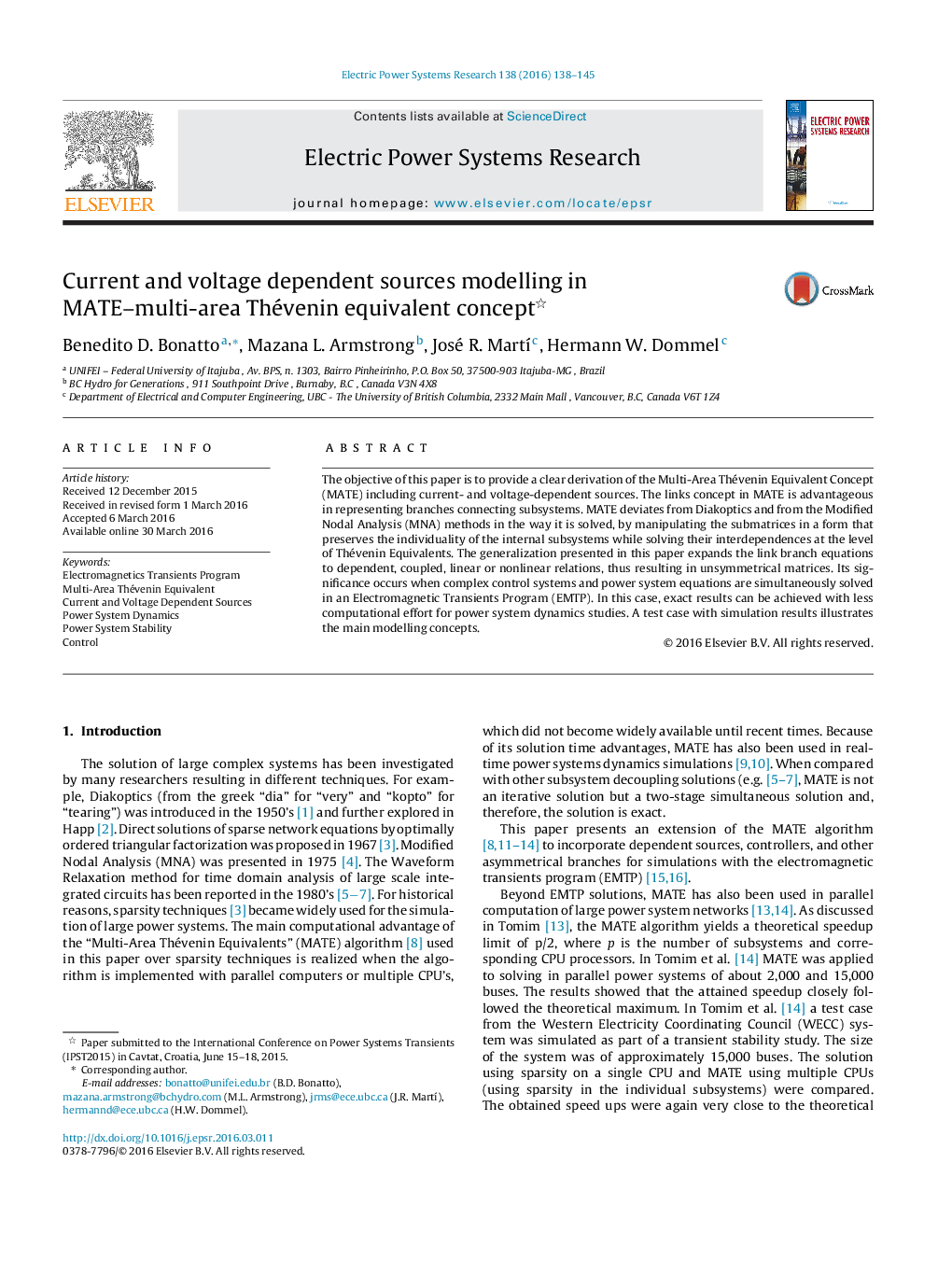| Article ID | Journal | Published Year | Pages | File Type |
|---|---|---|---|---|
| 704397 | Electric Power Systems Research | 2016 | 8 Pages |
The objective of this paper is to provide a clear derivation of the Multi-Area Thévenin Equivalent Concept (MATE) including current- and voltage-dependent sources. The links concept in MATE is advantageous in representing branches connecting subsystems. MATE deviates from Diakoptics and from the Modified Nodal Analysis (MNA) methods in the way it is solved, by manipulating the submatrices in a form that preserves the individuality of the internal subsystems while solving their interdependences at the level of Thévenin Equivalents. The generalization presented in this paper expands the link branch equations to dependent, coupled, linear or nonlinear relations, thus resulting in unsymmetrical matrices. Its significance occurs when complex control systems and power system equations are simultaneously solved in an Electromagnetic Transients Program (EMTP). In this case, exact results can be achieved with less computational effort for power system dynamics studies. A test case with simulation results illustrates the main modelling concepts.
